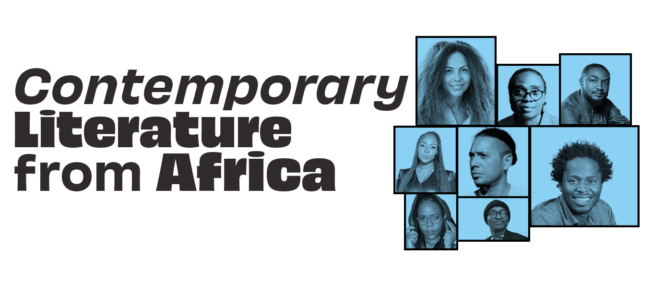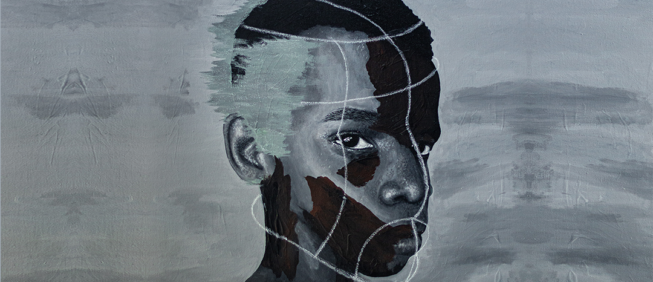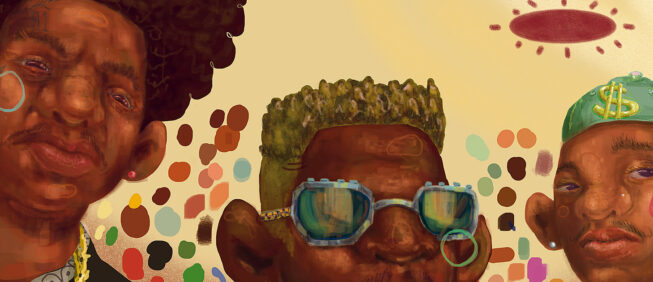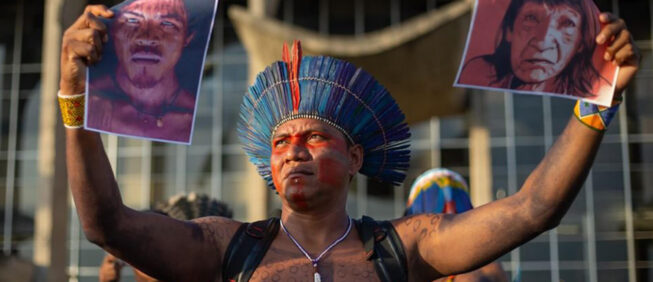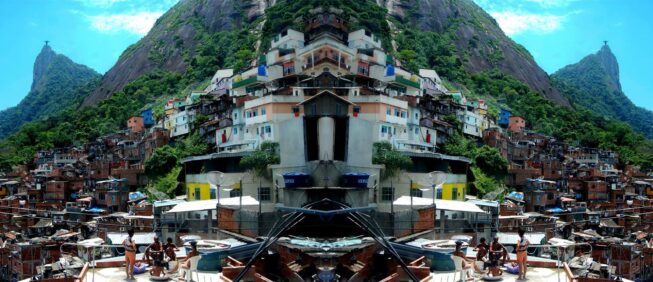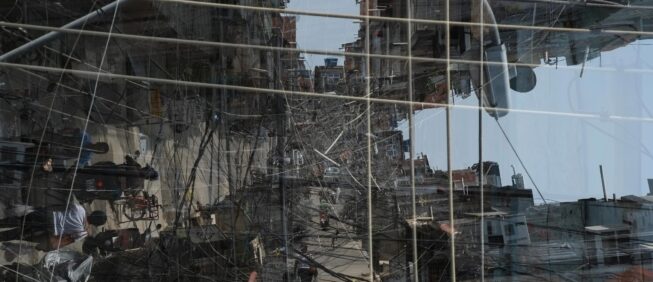One swallow does not a summer make, but two…
Poetic-visual essay addresses the daily life of migrants in Rio de Janeiro
Pablo Vergara
| BRAZIL |
September, 2023
translated by Mariana Costa
Human beings, like swallows, have traveled the world in search of seasons, dreams, work, and love, since ancient times. Sometimes we migrate voluntarily, with heavy backpacks full of utopias on our backs, and the desire to discover, learn, and adventure into a new culture and new form of idiosyncrasy, and delve into the mysteries of new people; that happened to me. Regrettably, at other times, we see forced immigration, due to the material difficulties of the reality and complexity of modern society; the result of ultra-neoliberal development of humanity today, where immigration has become a central topic. As if exploiting immigrants were not enough, now the intention is to ban them completely, thereby fragmenting their lives, families, and personhood.
Although Rio de Janeiro may be considered a cosmopolitan city, built by immigrant labor (both from other regions of Brazil and countries), it is a contradictory city, where the topic of migration gained global significance following the brutal murder of Moïse Kabagambe at the Tropicália kiosk, in Barra da Tijuca, in the Zona Oeste of Rio. This incident brought to light the daily lives of immigrant communities in the "wonderful city".
This report presents us with the life of Thezis (aged 31), a Congolese immigrant who lives in Nilópolis, Baixada Fluminense, on the outskirts of Rio de Janeiro, and is an adherent of sapeur. And that of Mili, a very joyful Venezuelan who gained space in the organized struggle for a home with the social movements which fight for the right to housing. Mili is an artisan, established in the streets of Catete.
Both are examples of the struggle and the possibility to reverse adverse situations, and become established as subjects in Brazil, through support and solidarity networks, highlighting the importance of immigrant communities and organizations which construct bonds of cooperation — often injections of enthusiasm for those who have left behind strong relationships, relatives, friends, and their homelands.
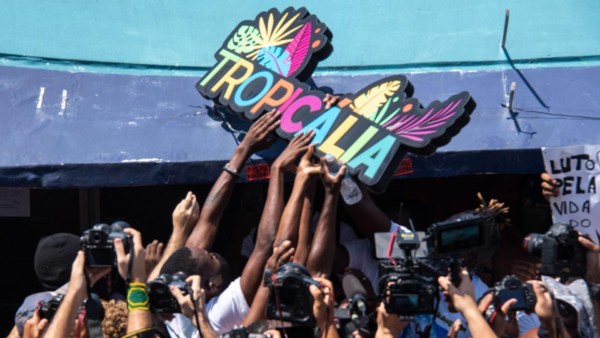
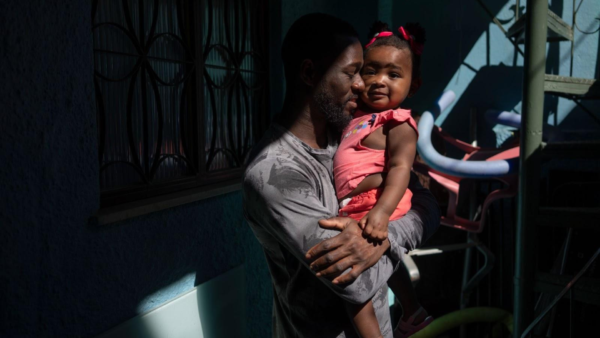
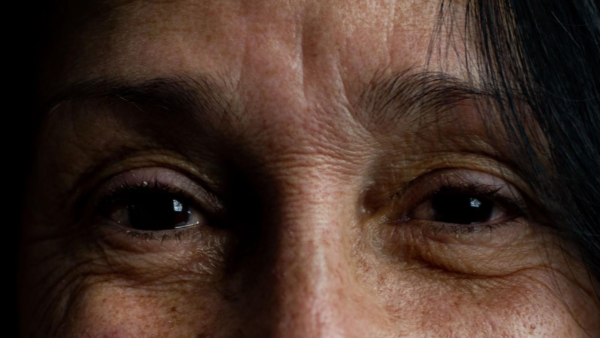
Pave the way my friend!
In the context of tragic disasters in the Mediterranean, of boats awash with a sea of people, of monumental walls at inhospitable desert borders, of old, rusty trains which carry Central American immigrants to cross the border, heading for the United States, there are exceptions: those immigrants with "little springs", as the Salvadoran guerrilla and poet, Roque Dalton, said, "the fruit comes from the seed." This is the case of Sobeida Milagros de Ortiz, known as Mili, a 60-year old Venezuelan immigrant, mother of 5 children and grandmother of fifteen grandchildren. She lives in the João Almirante Cândido settlement, organized by the Frente Internacionalista dos Sem-Teto, (Internationalist Front for the Homeless), located in Rua do Rosário in the center of Rio de Janeiro.
According to the Brazilian government, more than 700,000 Venezuelan immigrants have entered the country in a period of five years. Just like Mili, there are a series of examples – immigrants who had to leave their homelands in search of a new life. This is a story of hope, collectivity, and immense efforts every day, brought to us by a mother and grandmother who would give anything for her children, and dreams of perhaps returning one day, to the land of Bolívar.
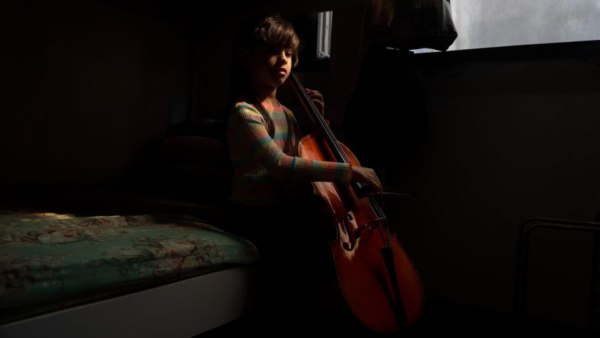
"Like a colt on a shield and the tricolor in the sky"
Mili is an extremely joyful women with a positive energy. She is one of those people who makes you smile, and with whom you always have a pleasant chat. She has a wealth of stories and rich life story. At the age of 60, Mili seems young in spirit. Always wearing All Star sneakers, she is a politicized, friendly artisan, and a lover of music, which makes her a very special person. She has gradually been able to reunite her family in the home where she currently lives and, as she says, “I brought together all of the family that I raised”.
It is a large family which welcomes us to the sound of the Venezuelan cuatro – a string instrument used in folk music, similar to the cavaquinho, and very popular in Venezuela. The young grandchildren look for the maracas and the key, and, in just a few seconds, set up something resembling a small Venezuelan-Brazilian folk group. Paulina gives us a cello recital, and that is how I was welcomed, while they offered me coffee with cachaça (sugar-cane rum). I drank it naively, thinking it was cocuy, a type of traditional Venezuelan spirit. However, I was "baptized" with 51.
"Como el cocuyo en el aire,
como la luna en el médano,
como el potro en el Escudo y el tricolor en el cielo.
Por aquí pasó, compadre, hacia aquellos montes lejos."
"Like a beetle in the air,
like the moon in the dune,
like a colt on a shield and the tricolor in the sky.
It passed through here, comrade, towards those distant mountains."1(Fragment of poetry by Alberto Arvelo Torrealba, entitled “Por Aquí Pasó”, a poem dedicated to Simón Bolívar)
I, personally, have always held great affection for the Venezuelan people; they are so likable, friendly, fun, and kind. They have a very special accent, similar to Cubans; they have something from the Antilles, the Caribbean, that blends with the mountains and where the Andes are hidden; this mountain range, which both unites and separates us, there in Táchira, in Mérida. Although the arepas were missing, the sound of the cuatro and its strings made me feel like I was in a Caracas housing complex – perhaps in 23 de Janeiro, one of the largest favelas in Latin America.
Mili makes her handicrafts and sells them in the streets of Catete. She explains that she entered Brazil via Pacaraima, in Rondônia. The first few months were extremely difficult, due to the language. “I was depressed in the first few days, and wanted to go back; what I wanted was to sell my handicrafts, although handicrafts sell themselves if somebody likes them,” Mili tells us about her initial difficulties in Brazil. “I came here and went back four times from 2014 to 2017.” After a long journey through various Brazilian states, she arrived in Rio de Janeiro. “My ex-partner helped me with a ticket to Rio de Janeiro, and I left Boa Vista, straight to Rio, by plane.
I came alone at first”; then she brought her daughter, Gizele, a beautiful young woman with hearing problems. “The political situation in my country is difficult; people need to know there is an embargo against my country. I am not politically persecuted, or a refugee; I am telling you the truth; I am speaking sincerely. Mili explains that she has always been a traveler: “I have always traveled with my Venezuelan cuatro, my music, and my handicrafts. Yes, now, I have stayed to be able to help the family I have built. I have a large family; my grandmother was from the Canary Islands, and my grandfather was of African descent”, Mili tells us about her family.
The workers are so beautiful, like the stars…
Mili has lived in various places in Rio de Janeiro, and some of the Zona Sul favelas have been her refuge. She shared the rent with other migrant companions, and moved around like this, and like so many others. She stayed in favelas known for housing large Latin migrant communities, such as the Chapéu Mangueira and Babilônia favelas, close to the coast in the Zona Sul, which makes life easier for those who sell handicrafts.
One day, she arrived to work in the streets of Catete and met Andre de Paula, the FIST (Frente Internacionalista dos Sem-Teto) leader. That meant a structural change in Mili’s life; from this time, she found a space in the fight for housing. Andre de Paula is known for his fight for housing in Rio de Janeiro, and is the FIST coordinator and lawyer. And life brought Mili and Andre de Paula together, and this meant a before and after.
From then on, a friendship began to form, which led Mili to take a space in the João Almirante Cândido settlement, which she had been renovating for two years, along with her family and FIST companions. Mili explains that the settlement was a process constructed with her daughters. "We became builders”, Mili comments on the restored apartment in the center of Rio. “I won’t hide anything; I suffered a lot at the beginning; I was verbally abused. I discovered the malice of the Brazilian people here”, she goes on to include the difficulties she had to establish a space. “The Brazilian people are very sympathetic, but there are people who complain about racism and xenophobia, and they promote themselves as good people, but they are not”, she tells us about the difficulties she had in becoming established. This is the story of Mili, a Venezuelan migrant who was able to mobilize in expansive support networks of immigrant coordination organizations.
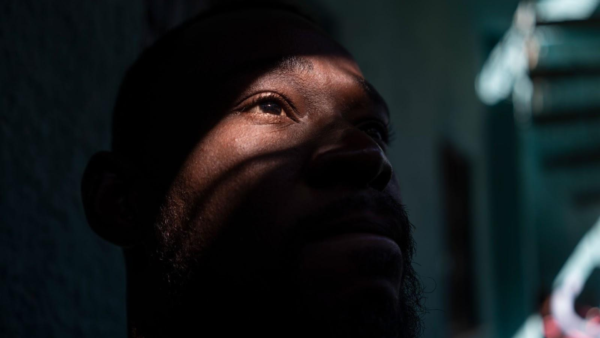
The sapeur of Nilópolis
It was a sunny Sunday, one of those on which the heat of Baixada Fluminense melts the asphalt, and on which the temperature seems to raise even further, when you see the glass windows of the spits which turn roasting chickens. I was in the heart of Nilópolis, the famous neighborhood in the outskirts of Rio de Janeiro, where the Beija-Flor samba school is based. A sapeur from Congo, Thezis Luyindula Lutete (age 31) lives in this neighborhood. When I arrived at Thezis’ house, I had to wait for him in the street. He arrived with his Brazilian wife, Camila Pereira Firmino de Sá, and daughter, Helena, carrying bags; what is surprising, is that a wide smile was reflected from a distance. He has this smile which lights up everything around him; coincidentally, Thezis works as an electrical technician, literally lighting up the entire city. I recognized him from 200 meters away, and shouted from afar: “What a smile you have!” and he started to laugh; he seemed excited, and happy to discover that a photographer had come to take his photo.
Our relationship had started several months before; he became “Mon ami Thezis” and I “Pablo mon ami” on WhatsApp. We were already in contact, and it was just after a photography course at Imagens do Povo that I discovered sapeur culture. I became interested in the subject, and started to look for contacts, which led me to the family of Moïse Kabagambe, who passed on Thezis’ contact information. They told me that he practiced sapeur culture, which made me curious and intrigued to know what this meant. "I arrived in Brazil on October 16, 2012; my father had arrived first, and he invited me to meet the family he had formed. He has been in Brazil for 27 years, and I for 11. I was one year old when my father left the Congo, and we had never met in person.
In time, we kept in contact through letters," Thezis reveals. He reveals that he knew about Brazil through the television: “I saw ‘Cidade de Deus’ and started to form an image of Brazil. I had no idea by telephone, but I started to imagine what Brazil was like through television. I had never physically met my father, but he organized the documents, and bought a ticket, so that I could come from the Congo to Brazil, when I was 21 or 22.” Thezis tells us that, initially, he did not want to come here to stay; he had a project under way as a model in the Congo, and had thought about living in Europe, and experiencing sapeur culture, but, on arriving in Brazil, he gradually became settled.
“My father gave me a little Larousse French-Portuguese dictionary; I started studying and learning,” he reveals. Thezis started to work as a site assistant on temporary contracts, and began to organize his paperwork. He adds that he had a lot of difficulties in receiving payment for his work; that they did not always pay what was agreed, or took a long time to pay him. This was how he met people from an electrical company.
Thezis was already qualified as an electrical technician in the Congo, and a power cut on a site would change his destiny. “One fine day, I prepared my curriculum, and presented myself at the company’s door. They liked me when they saw me, and embraced me right away. Two supervisors arrived; I thanked them and handed them my CV. Several days later, I received a call to start working as an assistant.” Thezis says: “I started as an assistant, and gradually began legalizing my documents as an electrician. I qualified as a professional, and stood out.”
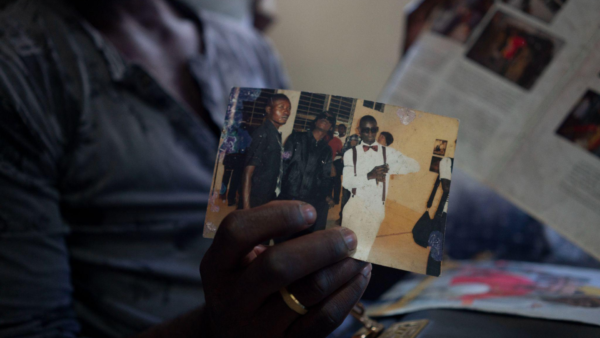
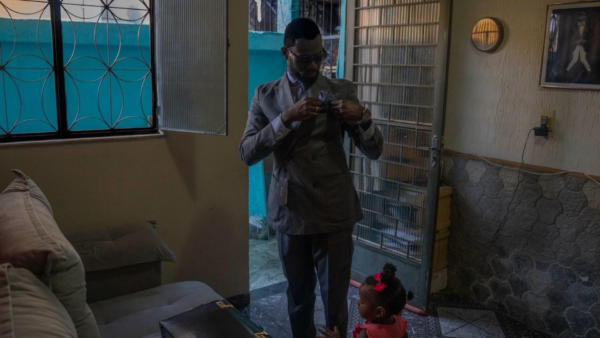
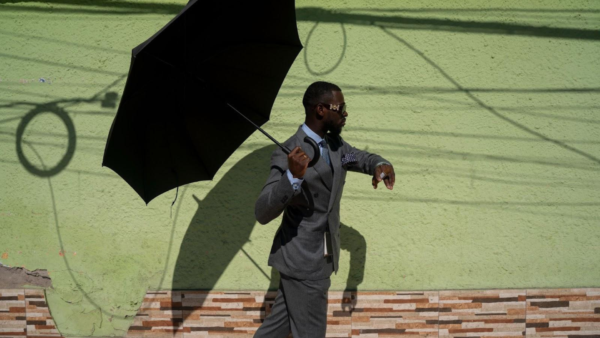
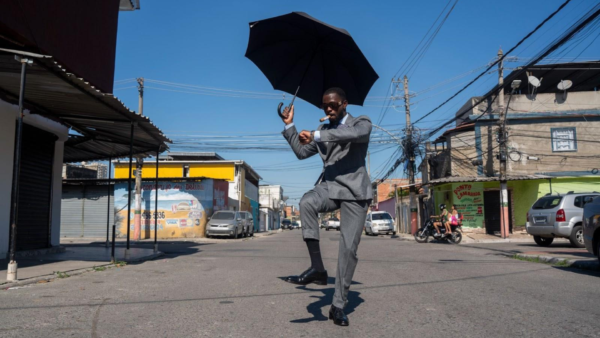
Thezis tells us that he has been part of sapeur culture from a young age, that his father was a sapeur in the Congo, and has always liked being well dressed. He learned about SAPE when he was very young: “I am well-known today; they really respect me for the quality of the elegance which I present to the public.” SAPE is an abbreviation of "La Société des Ambianceurs et des Personnes Élégantes", a type of association of elegant people; a philosophy of life which emerged in the Congo. "When we dress elegantly, we show that we are elegant and at the same level," Thezis explains. “When you go unnoticed, you are on the verge of death”, adds our Baixada Fluminense sapeur.
Solidarity and communities
Solidarity and cooperation are extremely important for migrants. Often, this is the emotional support which helps us build roots in a new country, to be able to eat and hear our native language, which connects us to our communities, and produces a feeling of permanence abroad.
To summarize, for a migrant to be fulfilled, they really need to territorialize the practices which they carry in their affective memories; in other words, to be able to have elements which expand their subjectivity and fullness, in addition to community ties, which are very important for an immigrant’s development: whether sport, culture, musicality, gastronomy, or practices which connect us to our past and present, since we are what we have already been. And to be able to build this dialectical movement becomes essential in a migrant’s daily life.

Pablo Vergara | CHILE |
Documentary Photographer. He holds a degree in Architecture and Urbanism from the University of Chile (2010). He also has a degree in photojournalism and photo documentary projects from UNAM (2023). His work focuses on social photography, on the axis of human rights and social movements. Vergara works with the themes: migration, agrarian conflicts, right to housing, agroecology, indigenous communities.
pablo.vergara.c@gmail.com